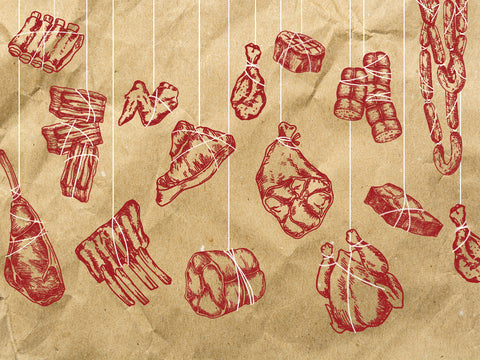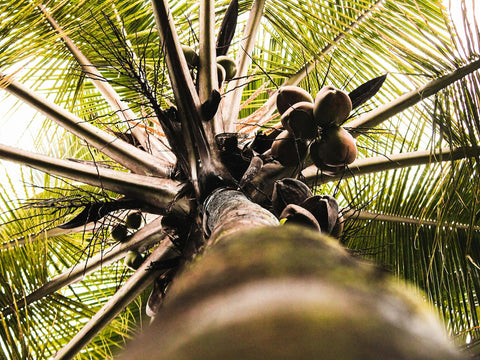“When an animal is born, we must try to give it the best life possible. And when the animal dies by our hand… we must respect the gift of the animal. You’re handling a piece of life. You must never forget that.”
Dario Cecchini’s episode of Chef’s Table explores the transformative journey of an aspiring veterinarian turned butcher and restaurateur in Panzano, Italy. Reluctantly inheriting his family’s butcher shop after his father’s passing, Cecchini faced a steep learning curve—one which required him to seek a deeper understanding of the art of butchery. These words from Orlando, his father’s longtime meat selector offered that wisdom, shaping his newfound role as a butcher.
Growing up in a family of butchers, he often thought highly of oft-neglected cuts. In the hands of a resourceful cook in their household, his grandmother cooked snout, trotters, and even animal tails. It wasn’t until he was 18 that he got to try a steak; when he finally ate one, he thought it was good, “but… everything else that my grandma cooked was paradise.” To him, the heart of eating on the dinner table was the offcuts his grandmother transformed into the most delicious dishes.
In his butcher shop, he would observe his customers asking only for steaks and filets. Dario found this unacceptable, knowing delicious meals could be prepared with the leftover cuts. In his quest to solve this problem, he opened his now famous restaurant, Solociccia—a place dedicated to celebrating every part of the animal, challenging traditional cooking. In his restaurant, the menu features innovative dishes from offcuts, like Musetto al Limone, a dish made from muzzle, trotters, and broth; Tenerumi in insalata, which is made with boiled beef knees and a vegetable salad; and Ramerino in culo, also known as “rosemary up the bum,” made of minced beef and served with a tangle of rosemary in the center. His commitment to nose-to-tail cooking—valuing every cut and promoting a holistic approach to consuming meat—became the hallmark of his restaurant’s success.
Nose-to-tail cooking is a culinary ethos that respectfully uses every edible animal part and cut instead of only the traditionally high-value ones. Beyond the conventional appreciation for steaks and filets, this method embraces offal such as tongue, intestines, heart, and blood. Although they might not be the first things that come to mind when thinking of meat, these often-overlooked parts encompass a spectrum of rich flavors, unique textures, and nutrients. Offcuts, on the other hand, include a diverse range of meat parts from trimmings or unusually shaped cuts. While they may not always look visually appealing, they make up for it in flavor and creativity in cooking. Pig’s cheeks, for instance, have an exceptionally tender and flavorful characteristic that results in succulent, fork-tender bits when you braise or boil them.
As people become more aware of the importance of sustainable eating habits, especially regarding meat consumption, the nose-to-tail approach plays a crucial role in understanding sustainability. It has become a pervasive movement and lifestyle that aims to safeguard the environment by reducing food waste and the need for mass-produced meat. By changing our consumption habits, we lessen our environmental impact and reduce carbon emissions.

It is a culinary philosophy asserting that each cut, whether a prime cut, offcut, or offal, deserves equal respect in the art of cooking as a sign of deeper respect for the gift of animals. In the book "Nose-To-Tail Eating: A Kind of British Cooking" by Fergus Henderson, he states, "If you're going to kill the animal, it seems only polite to use the whole thing."
His book is a meat-centric cookbook with recipes that use not just the high-value cuts of meat but also its internal organs such as blood, guts, and even the bone marrow. For Henderson, it would seem disingenuous to the animal for us not to make the most out of it.
Interestingly, while offal and animal offcuts were once disregarded in various parts of the world, the Philippines has always embraced nose-to-tail as a culinary tradition where every edible part of an animal is honored. In a cultural context, even ancient Filipinos regarded pigs and chickens with reverence. There are historical anecdotes that our ancestors viewed these animals as sacred offerings to deities as an act of gratitude or as part of rituals praying for prosperity and well-being. This deep-rooted tradition underscore not only the culinary ethos of utilizing every part of the animal but also the spiritual significance attached to it.
Embracing nose-to-tail cooking and eating is also primarily rooted in Filipinos’ resilience and will to survive, unleashing culinary creativity that made iconic Filipino cuisines from offcuts. Take the famous Sisig as an example—during the American occupation, the US troops in Pampanga would prepare their meals and discard pig heads and innards; the locals would buy these cheaper offcuts and make them into sour salad. From there, it evolved into a dish made with pig's ears, snout, and belly, that took over the nation and the world.
The ubiquity of nose-to-tail cooking in Filipino gastronomy is evident in the other dishes served on our dinner tables. Take, for instance, Dinuguan, a rich stew harmonizing diced pork and its offal, simmered in a blend of pork blood, herbs, spices, and vinegar. Kare-Kare is a savory and nutty stew that features oxtail, beef tripe, and beef chuck simmered in peanut sauce. This culinary philosophy extends beyond home-cooked meals and on to our street food culture, where delicacies like Betamax (marinated chicken blood with a soft tofu texture), Baga (marinated lung skewers of chicken or beef), and Isaw (marinated intestine skewers of chicken or pig) highlight the Filipino commitment to nose-to-tail cooking. These dishes are a testament to Filipino food culture and tradition intertwined with the principles of utilizing every part of the animal.
Nose-to-tail cooking is a revolutionary concept for some, a movement for others, and an enduring culinary norm for many. Amid these diverse perspectives, the underlying message of nose-to-tail philosophy resonates profoundly: it calls upon humanity to embrace a collective responsibility to value our resources. Beyond the kitchen, it becomes a symbolic act that underscores the significance of respecting the life and inherent gift of animals to humankind—and as humans, it is our shared duty to recognize and honor this value by ensuring that every cut is indeed a good cut.





